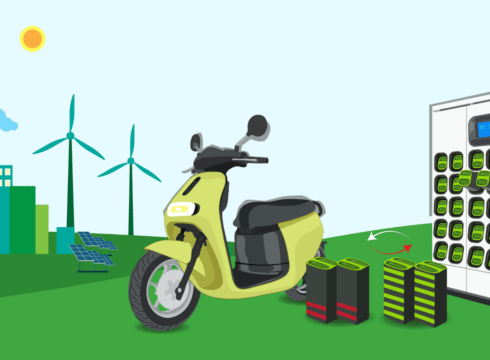As the world pivots towards green energy transitions, the demand for batteries is set to surge exponentially
By incentivising domestic production of materials necessary for battery manufacturing, the PLI scheme can propel India towards self-sufficiency in the battery production industry
India, in line with its sustainability goals, can leverage the PLI scheme to incentivise the establishment of cutting-edge battery recycling facilities
Inc42 Daily Brief
Stay Ahead With Daily News & Analysis on India’s Tech & Startup Economy
In today’s era, the shifting of the world towards clean and green energy sources is not just an objective but an essential requirement. At the core of this transition to a carbon-neutral future lies the batteries, from powering electric vehicles to storing renewable energy, which cannot be overstated.
From the tiny lithium cells in smartphones to the mammoth battery packs propelling electric vehicles, these minerals are the unsung architects of a sustainable energy future. The demand for batteries is skyrocketing, and simultaneously, a pressing need for a secure and sustainable supply of critical minerals like lithium, nickel, cobalt, manganese, and graphite.
Unequivocally, the International Energy Agency’s (IEA) latest energy outlook report also underlines the pivotal role batteries play in the clean energy future and the multi-fold increase in demand for critical minerals by 2040, largely driven by the proliferation of electric vehicles and energy storage systems.
As the world pivots towards green energy transitions, the demand for batteries is set to surge exponentially. This surge, however, hinges on a stable supply of critical minerals, a fact highlighted by India’s first comprehensive report released in June 2023 on critical minerals.
This report identified a list of 30 minerals including the minerals necessary for battery production, reflecting India’s foresight in recognising the significance of a supply chain for them.
India’s commitment to harnessing clean energy, reduction in non-fossil fuel capacity, and fostering indigenous capabilities is resolute. As the country aims to augment its renewable energy capacity and promote electric mobility, a robust and strategic policy ecosystem for battery materials becomes imperative.
This necessity underscores the introduction of a Production-Linked Incentive (PLI) scheme tailored for the battery materials industry. This scheme, proven successful in invigorating various sunrise sectors, holds immense promise in driving investments, fostering eco-sustained innovation, and fortifying the entire value chain associated with battery materials.
A Step Towards Self-Sufficiency
By incentivising domestic production of materials necessary for battery manufacturing, the PLI scheme can propel India towards self-sufficiency in the battery production industry.
The implications of such a scheme are multifaceted and far-reaching. Not only does it spur economic growth by attracting investments and creating employment opportunities, but it also addresses environmental concerns associated with the extraction and processing of these minerals.
The emphasis on responsible and sustainable practices within the PLI scheme can be a game-changer, encouraging eco-friendly or decarbonisation technologies, promoting recycling, and mitigating the environmental footprint of battery production.
As India navigates its path towards decarbonisation, recycling, commonly recognised as the linchpin of a circular economy, takes on vital significance, particularly concerning battery materials.
Niti Aayog proposes incentivising the electric vehicle push and domestic value amplification through production-linked incentives (PLIs), tax benefits, and royalties, which intend to support mineral processing for lithium-ion batteries.
India, in line with its sustainability goals, can leverage the PLI scheme to incentivise the establishment of cutting-edge battery recycling facilities. This not only addresses the environmental challenges of battery disposal but also unlocks a secondary source of critical minerals, fostering resource efficiency.
However, in the broader context, the global race for critical minerals has profound geopolitical implications, as countries are vying for control over resource-rich regions, and supply disruptions can have far-reaching consequences.
In this context, India’s move to bolster its domestic battery materials industry through the PLI scheme is not just a matter of economic prudence but a strategic move to enhance geopolitical resilience.
Additionally, it will also reduce dependency on imports for critical minerals, diminishing vulnerability to external pressures and supply chain disruptions. This also fosters economic sovereignty, strengthens India’s negotiating position on the global stage, and positions it as a reliable partner in the global supply chain, fostering international collaborations and partnerships.
In Conclusion
Introducing the PLI scheme for the battery materials industry marks a defining moment in India’s energy narrative as it is not just an economic incentive; it’s a vision—a commitment to Atmanirbhar, sustainability, and resilience in a rapidly transforming world.
This initiative charts a course for India’s energy independence by safeguarding critical minerals and aligning energy security with aspirations for a greener, prosperous future.
{{#name}}{{name}}{{/name}}{{^name}}-{{/name}}
{{#description}}{{description}}...{{/description}}{{^description}}-{{/description}}
Note: We at Inc42 take our ethics very seriously. More information about it can be found here.


